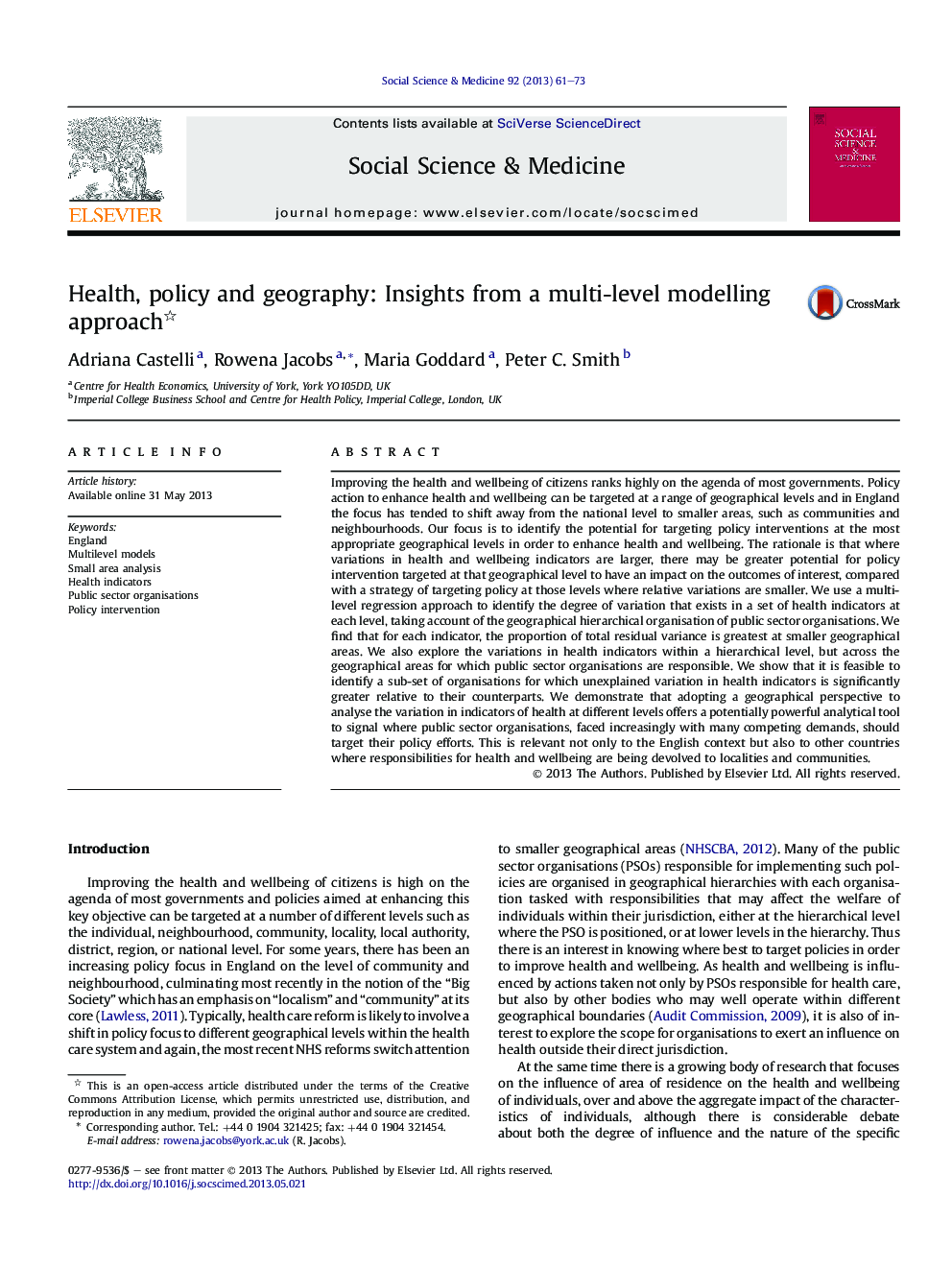| Article ID | Journal | Published Year | Pages | File Type |
|---|---|---|---|---|
| 7337002 | Social Science & Medicine | 2013 | 13 Pages |
Abstract
Improving the health and wellbeing of citizens ranks highly on the agenda of most governments. Policy action to enhance health and wellbeing can be targeted at a range of geographical levels and in England the focus has tended to shift away from the national level to smaller areas, such as communities and neighbourhoods. Our focus is to identify the potential for targeting policy interventions at the most appropriate geographical levels in order to enhance health and wellbeing. The rationale is that where variations in health and wellbeing indicators are larger, there may be greater potential for policy intervention targeted at that geographical level to have an impact on the outcomes of interest, compared with a strategy of targeting policy at those levels where relative variations are smaller. We use a multi-level regression approach to identify the degree of variation that exists in a set of health indicators at each level, taking account of the geographical hierarchical organisation of public sector organisations. We find that for each indicator, the proportion of total residual variance is greatest at smaller geographical areas. We also explore the variations in health indicators within a hierarchical level, but across the geographical areas for which public sector organisations are responsible. We show that it is feasible to identify a sub-set of organisations for which unexplained variation in health indicators is significantly greater relative to their counterparts. We demonstrate that adopting a geographical perspective to analyse the variation in indicators of health at different levels offers a potentially powerful analytical tool to signal where public sector organisations, faced increasingly with many competing demands, should target their policy efforts. This is relevant not only to the English context but also to other countries where responsibilities for health and wellbeing are being devolved to localities and communities.
Related Topics
Health Sciences
Medicine and Dentistry
Public Health and Health Policy
Authors
Adriana Castelli, Rowena Jacobs, Maria Goddard, Peter C. Smith,
